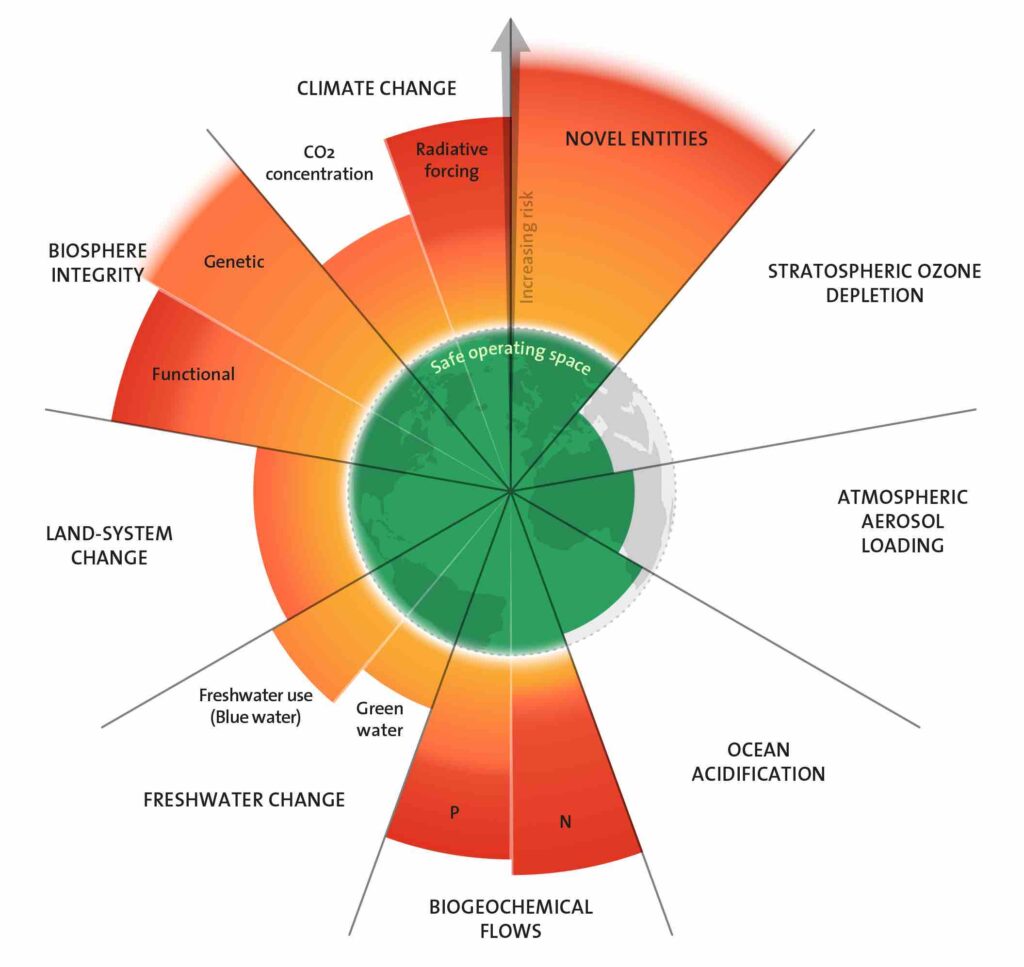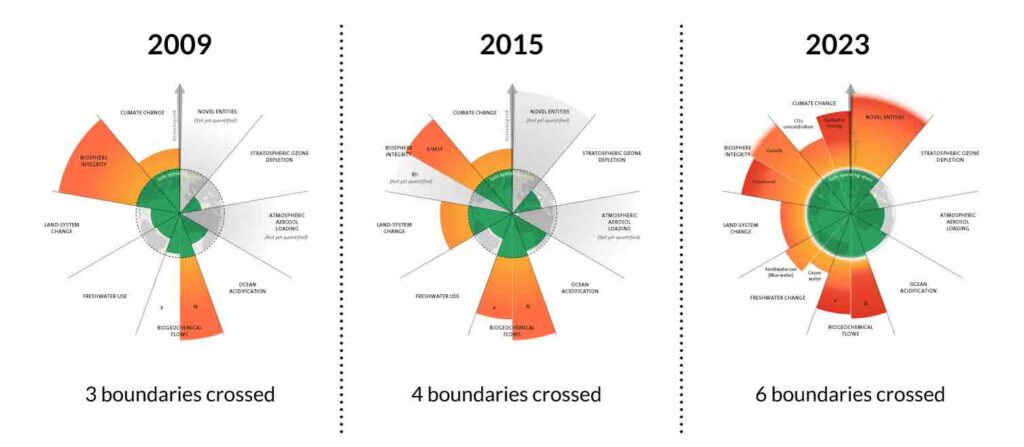For the first time, an international team of scientists is able to provide a detailed outline of planetary resilience by mapping out all nine boundary processes that define a safe operating space for humanity.
A groundbreaking study revealed that humanity is toeing a precarious line, with six of the nine planetary boundaries, vital for our survival, already transgressed. The latest research, published in the journal Science Advances, underscores a planet under intense strain, edging closer to irreversible ecological change.
RELEVANT SUSTAINABLE GOALS



The 2023 update to the Planetary boundaries
An international consortium of experts has, for the first time, meticulously assessed and quantified all nine boundary processes which demarcate a safe operating space for human existence. These boundaries range from global warming to deforestation, from pollution and plastic to the nitrogen cycle and freshwater.
Dr. Johan Rockström, director of the Potsdam Institute for Climate Impact Research, and Professor of Environmental Science at the Stockholm Resilience Centre, drew an alarming analogy: “This update on planetary boundaries paints a picture of a patient that is critically unwell. We’re escalating the pressures, breaching vital thresholds. It’s a race against time before these combined stresses result in irreversible harm.”
Understanding the planet’s climate and ecosystems as a system – Planetary Boundaries Over Time
Building on a framework first conceptualized in 2009, this latest study is the third of its kind, but the inaugural one to offer a holistic health check of all nine earth processes and systems underpinning our planet’s stability and resilience. Katherine Richardson, lead author and Professor in Biological Oceanography at the University of Copenhagen, likened our planet’s health to the human cardiovascular system, where boundary transgressions are akin to hypertension – not immediately lethal, but a harbinger of potential catastrophic events.
“We don’t fear immediate disaster upon breaching a boundary. But as we cross these limits, we’re amplifying risks to both humanity and the ecosystems we inhabit,” Richardson noted, pointing to the successful global efforts post the 1990s that reversed the transgression of the ozone boundary, as a testament to collective remedial action.
The updated assessment provides new insights:
- Atmospheric Aerosol Loading: Although not surpassed, increasing pressures from particle pollution are impacting monsoon systems in vast areas.
- Novel Entities: This boundary, now quantified for the first time, is exceeded. It comprises human-made compounds like microplastics, pesticides, and nuclear waste.
- Freshwater: Redefining our understanding of water boundaries, it accounts for both green water (contained in soil and vegetation) and blue water (visible in lakes and rivers) – and we’ve overstepped both limits.
- Biosphere Integrity: Innovative methods depict our transgression back in the late 19th century, with the inception of expansive global agriculture and forestry.
The research team reiterates that our planet’s resilience isn’t just about countering climate change. “Earth is vibrant and alive, and the ripple effects of our actions are unpredictable. Our mission is to work in tandem with policymakers and businesses to alleviate pressures across all boundaries,” says co-author Sarah Cornell of the Stockholm Resilience Centre.
We don’t know how long we can keep transgressing these key boundaries before combined pressures lead to irreversible change and harm.
Johan Rockström, co-author and Centre researcher
Computer models played a pivotal role in this sweeping assessment, simulating interactions between climate and ecosystems across several centuries. These models incorporate both immediate reactions and more latent processes, painting a comprehensive picture of today’s environmental repercussions.
Rockström expressed an urgent concern: “We’re witnessing escalating climate events, like the third human-amplified El Niño in just a quarter-century. But the real dread lies in the mounting signs of declining planetary resilience, edging us towards tipping points and endangering the 1.5°C planetary climate boundary.”
Earth is a living planet, so the consequences are impossible to predict.
Sarah Cornell, co-author and Centre researcher
This new planetary boundary evaluation not only accentuates the inextricable ties between humanity and Earth but also urges for a consolidated effort to nurture, recover, and bolster our planet’s resilience. In the words of co-author Ingo Fetzer, “It starkly illuminates the environmental repercussions of the Anthropocene epoch and accentuates our duty as the impending custodians of our planet.”
Lead image courtesy of ferrantraite from Getty Images Signature via Canva
You may also be interested in :
10 Inspiring Social Justice And Activism To Follow On Instagram




